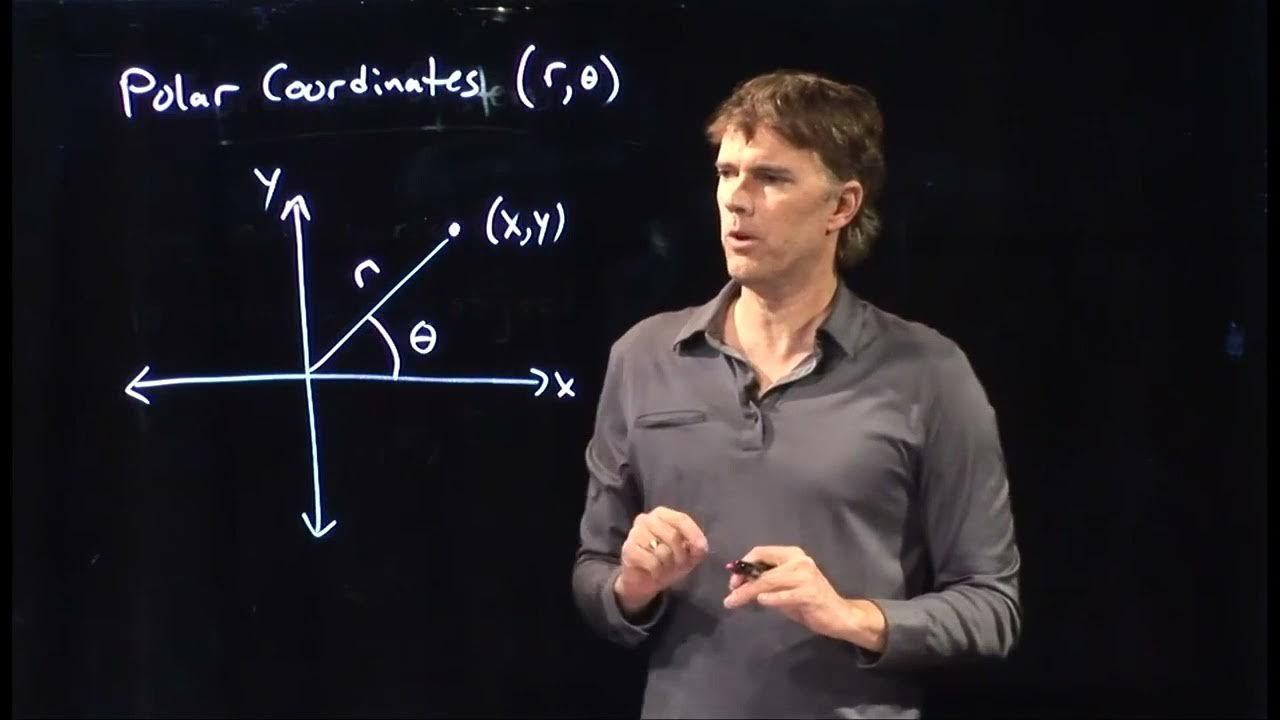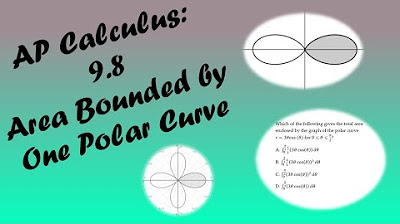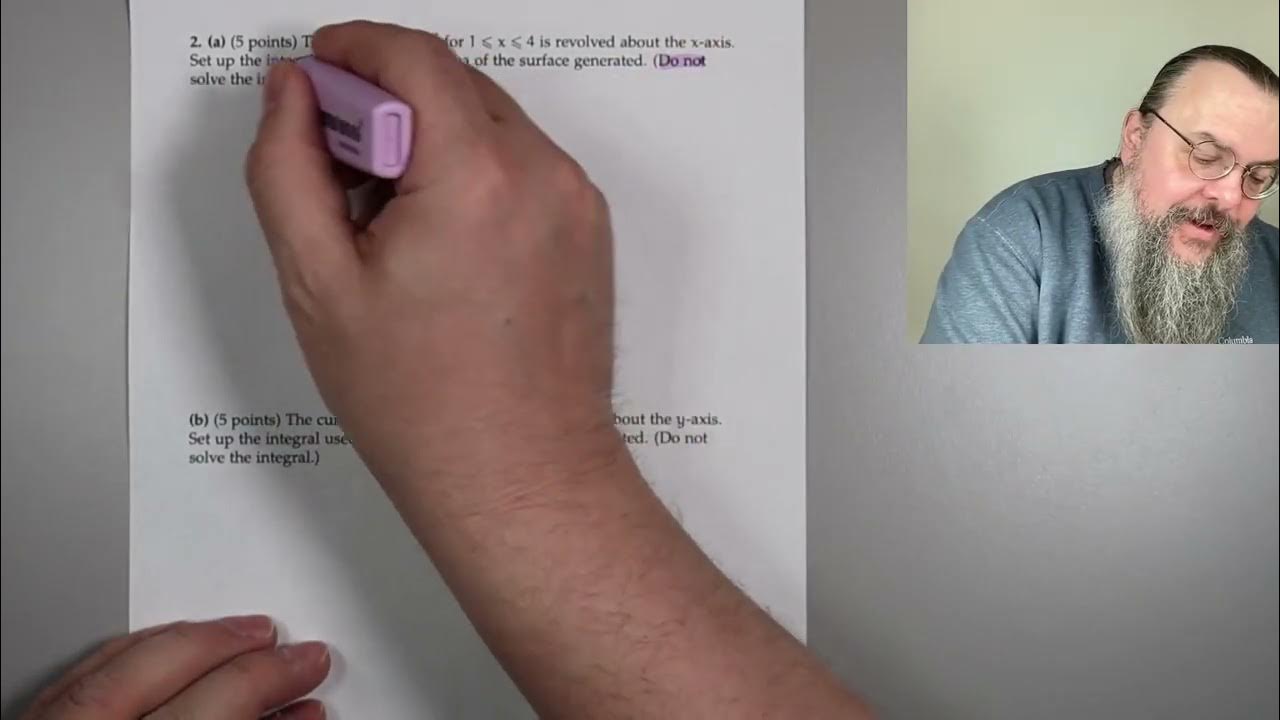Lesson 15 - Area And Length In Polar Coordinates (Calculus 2 Tutor)
TLDRThis tutorial segment delves into the application of polar coordinates in advanced calculus, specifically focusing on the concepts of area and length calculations. The instructor clarifies that integration in polar coordinates is not as daunting as it sounds, being fundamentally similar to regular integration but with a shift in variables. The lesson begins with the area of a circle's sector, introducing the formula \( \frac{1}{2}r^2\theta \) without proof, emphasizing its importance. The script then transitions to setting up integration problems by defining limits in theta for a polar function, illustrating the process with a diagram of a polar graph in the coordinate system.
Takeaways
- 📚 The section is about integrating in polar coordinates, which is a culmination of the topics discussed in previous sections on polar equations and coordinates.
- 📐 Polar coordinates are useful for solving problems with circular symmetry due to their simplicity, especially when dealing with equations of circles.
- 🔍 Integration in polar coordinates is not fundamentally different from regular integration; it involves integrating with respect to different variables, such as theta, instead of x.
- 📈 The script introduces the concept of calculating the area of a section of a circle, specifically a pie wedge, using polar coordinates.
- 🌐 The area of a pie wedge in a circle is given by the formula \( \frac{1}{2} r^2 \theta \), where \( r \) is the radius and \( \theta \) is the angle.
- 📝 The importance of understanding the setup of the problem is emphasized, as it is crucial for correctly applying integration in polar coordinates.
- 📉 The script mentions that the area calculation for a pie wedge is provided without proof, indicating that the focus is on application rather than theoretical derivation.
- 📌 The concept of 'theta' is introduced as the variable that describes the openness of the pie wedge and is crucial in determining the area.
- 📊 The script discusses the representation of a polar function in a coordinate system, showing how different values of theta result in different radii.
- 📈 The process of defining the limits of integration in polar coordinates is illustrated by selecting specific angles alpha and beta to define the region of interest.
- 📚 The script is part of a tutorial series on advanced calculus, indicating that the content is aimed at individuals with a solid foundation in calculus.
Q & A
What is the main topic of this section of the advanced calculus tutorial?
-The main topic of this section is area and length in polar coordinates, which is essentially integration in polar coordinates.
Why are polar coordinates useful for certain problems?
-Polar coordinates are useful for problems involving circular symmetry because they simplify the equations and make it easier to solve such problems.
What is the significance of the equation of a circle in polar coordinates?
-The equation of a circle in polar coordinates is simple, which makes it easier to work with and lends itself to having simple functions in polar coordinates.
What is the fundamental process of integration as described in the script?
-The fundamental process of integration involves taking little slices of the function and adding them up, which is the same in polar coordinates as it is in rectangular coordinates.
What is the formula for the area of a pie wedge of a circle in polar coordinates?
-The area of a pie wedge of a circle is given by the formula one-half r squared times theta, where r is the radius and theta is the angle of the wedge.
Why is it important to understand the area of a pie wedge in polar coordinates?
-Understanding the area of a pie wedge is important because it forms the basis for integration in polar coordinates, allowing for the calculation of areas and volumes with circular symmetry.
What is the relationship between the angle theta and the area of the pie wedge in polar coordinates?
-The area of the pie wedge is directly proportional to the angle theta, meaning that larger angles result in larger areas of the wedge.
How does the script suggest setting up a problem for integration in polar coordinates?
-The script suggests that setting up a problem for integration in polar coordinates involves understanding the variables involved and the geometry of the problem, similar to regular integration but with different variables.
What is the role of the radius R in the area calculation of a pie wedge in polar coordinates?
-The radius R is squared in the area calculation formula, indicating that the area of the pie wedge increases with the square of the radius.
How does the script introduce the concept of integration in polar coordinates without overwhelming the learner?
-The script introduces the concept by relating it to the familiar process of integration in rectangular coordinates and emphasizing that the fundamental process remains the same, just with different variables.
Outlines
📚 Introduction to Polar Coordinates and Integration
In this introductory paragraph, the speaker welcomes viewers to an advanced calculus tutorial focused on polar coordinates. The main theme revolves around the culmination of topics discussed in previous sections, such as understanding polar coordinates, converting between polar and rectangular forms, and the simplicity of polar functions, especially for problems with circular symmetry. The speaker emphasizes that while the topic of integration in polar coordinates might sound complex, it is fundamentally no different from regular integration, only with different variables. The goal is to integrate along different dimensions, such as theta, instead of the x-axis. The paragraph sets the stage for learning about the area of a section of a circle in polar coordinates, introducing the formula for the area of a pie wedge as a precursor to more complex integration problems.
Mindmap
Keywords
💡Advanced Calculus
💡Polar Equations
💡Polar Coordinates
💡Rectangular Coordinates
💡Polar Functions
💡Circular Symmetry
💡Integration
💡Theta (θ)
💡Area
💡Radius (R)
Highlights
Introduction to the advanced calculus section focusing on polar equations and polar coordinates.
Culmination of topics in polar coordinates with a focus on area and length calculations.
Integration in polar coordinates is equivalent to tackling area and length problems.
Polar coordinates are beneficial for solving problems with circular symmetry due to their simplicity.
Conversion between rectangular and polar coordinates is a fundamental concept.
Polar functions are easier to work with when dealing with circular symmetry.
Integration in polar coordinates involves integrating along theta instead of x.
Fundamentally, polar coordinate integration is similar to regular integration.
Understanding the setup of the problem is crucial for successful integration.
Learning about the area of a section of a circle is a precursor to integration.
Area of a pie wedge in a circle is given by the formula (1/2) * r^2 * theta.
The area formula involves R squared and theta, indicating the size of the wedge.
The importance of the area formula for pie wedges in understanding polar coordinate integration.
Introduction to a coordinate system and a function represented in polar equation.
Demonstration of how to represent a polar function in a specific arc.
Defining the limits of integration in polar coordinates with angles alpha and beta.
Setting up the problem for integration by defining the start and end points in theta.
Transcripts
Browse More Related Video
5.0 / 5 (0 votes)
Thanks for rating:





